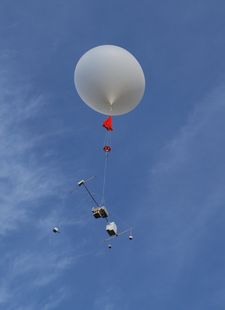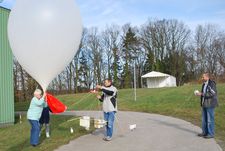Lindenberg Upper Air Methods Inter-comparisons
LUAMI (2008)
The Lindenberg Upper Air Methods Inter-comparisons (LUAMI) was a campaign held at the Meteorological Observatory Lindenberg/Richard Aßmann Observatory (MOL-RAO) from 3.Nov 2008 to 20. Nov 2008.
The main goal of this effort was an inter-comparison between different in-situ and ground based remote sensing instruments. The climate monitoring of temperature, humidity, and wind in the upper air makes high demands on precision and long-term stability. These are currently not met by most of the instruments that are in use for routine weather observations. Based on the results of LUAMI an assessment of the accuracy of the different methods will be worked out. A further goal of the campaign was to test the suitability of the different methods for their operation in operational networks and reference networks like GRUAN. Therefore, error sources and systematic biases need to be identified and quantified. Given the multitude of the deployed instruments LUAMI will provide a unique dataset that will be used for studying atmospheric processes relevant for climate research.
During the campaign, radiosondes from commercial manufacturers (Vaisala, Graw, Intermet Africa, and Meteolabor) as well as research instruments from the Central Aerological Observatory (Moscow), the ETH Zürich and MOL-RAO were launched coincidentally on balloons. Modern ground based remote sensing instruments have proven their ability as measurement references in recent year and can be used to validate the results from the radiosondes in particular concerning the humidity. The remote sensing instruments used for LUAMI are part of the routine observational program of MOL-RAO or have been provided by external partners (GFZ Potsdam, Jenoptik Teltow, Leosphere Paris). A Europe-wide network of microwave profilers and a small-scale network of GPS receivers used for a tomography of water vapor were operated well into December. The campaing was managed by the GRUAN lead center in Lindenberg as a CIMO activity under the auspices of WMO. The new COST actions WAVACS („Water vapour in the climate system“) and EG-CLIMET „European ground-based observations of essential variables for CLImate and operational METeorology“) were also involved in the effort.

